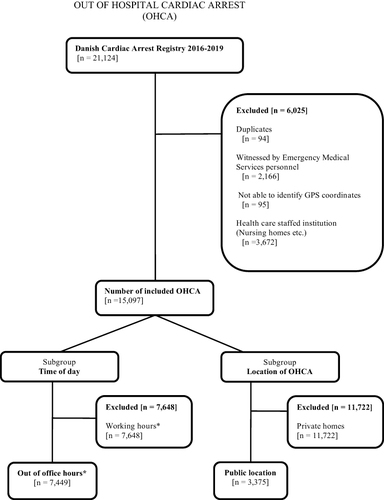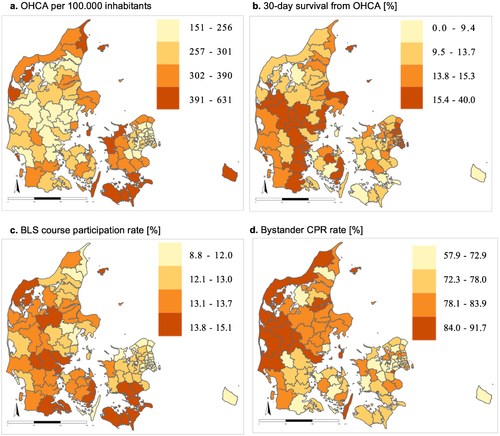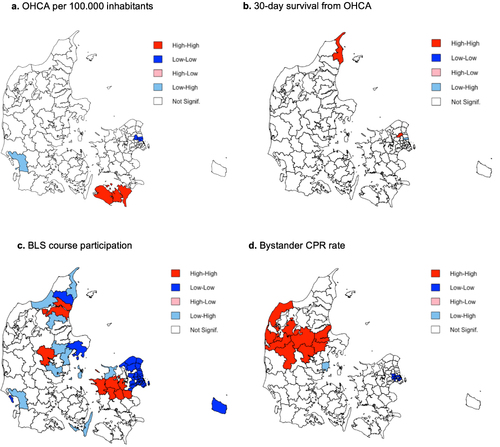Figures & data
Table 1 Summary Statistics of Out-of-Hospital Cardiac Arrest and Basic Life Support Course Participation in Denmark, from 2016 to 2019
Figure 1 Modified Consort Flow Diagram.

Figure 2 Incidence proportion of number OHCAs per 100,000 inhabitants, 30-day survival BLS course participation rates and bystander rates at OHCA in Denmark at municipal level from January 1 2016 to December 31 2019.

Table 2 Global Moran’s I Summary Statistics
Figure 3 Map of significant geographical clusters of (a) number OHCA per 100,000 inhabitants; (b) 30-day survival; (c) BLS course participation rates and (d) bystander CPR rates at OHCA at municipal level from 2016 to 2019.

Table 3 Odds Ratios and Summary Statistics from Non-Spatial and Spatial Analysis
